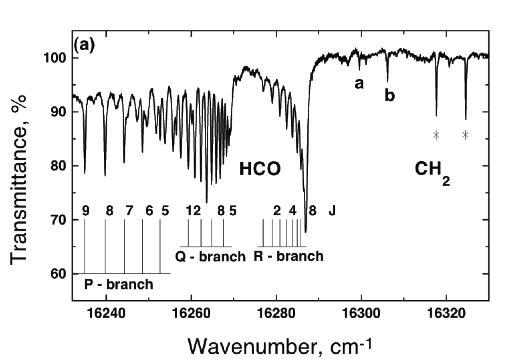

Several laser spectroscopy methods are used in our laboratory:
Laser-Induced Fluorescence (LIF) is probably the most widespread method for diagnosing combustion species, as it provides very sensitive local concentration measurements. In our laboratory we will use one dimensional and plan to use the planar LIF (PLIF) technique together with an intensified CCD (ICCD) camera to obtain spatially resolved concentration measurements. LIF can also measure the temperature of a flame by extracting the information from the rotational structures of the OH and NO electronic spectra. LIF does not provide absolute concentration measurements directly, however; it requires calibration. We will use the ICLAS and CRDS absorption spectroscopy methods for this purpose. It has been demonstrated in several works that a combination of LIF and CRDS provides very accurate concentration measurements.
Cavity Ring Down Spectroscopy (CRDS) is a highly sensitive absorption method based on measuring the decay profile of a laser pulse injected into a mirrored optical cavity. CRDS may be considered a multipass absorption technique; the absorption path length is dictated by the number of reflections required for the intensity to decay by a factor 1/e. In the visible range, using the best available mirrors, the total path length may be on the order of tens of kilometers. In contrast with standard multipass absorption methods, the probe volume is limited to the fundamental cavity mode. This technique thus provides spatial resolution on the order of a fraction of a millimeter, which is sufficiently fine for low-pressure flat flames. Since its demonstration by O’Keefe and Deacon, this method has been used in many different applications including flame measurements.
Intracavity Laser Absorption Spectroscopy (ICLAS) is a method in which absorbing species are placed inside the cavity of a broadband laser. Due to the positive feedback mechanism in lasers, even minute quantities of a narrow-line absorber will produce holes in the spectrum where the laser output is partially quenched. ICLAS was first proposed more than forty years ago, and since then has been the subject of hundreds of papers and several review articles. Our own extensive experiments with ICLAS in flames have shown that this is probably the most sensitive of the absorption spectroscopy methods considered. In figure bellow the ICLAS spectra of HCO and CH2 observed in low pressure methane flame are depicted. The knowledge of these radical concentrations is of great importance for correct mechanism verifications. ICLAS has several important advantages over CRDS, mainly:
1. The sensitivity of ICLAS is higher because it can attain longer optical paths.
2. In ICLAS, a CCD detector collects information from several thousand wavelength channels simultaneously during a single pulse. Thus, the time required to obtain
a given amount of spectral information is several orders of magnitude shorter for ICLAS than for CRDS or LIF.
3. Because ICLAS tolerates relatively high broadband losses in the cavity, optical windows can be used to separate the cavity from the flame region.
4. More recently we have started using FLICAS, a modified ICLAS technique based on IR fiber lasers. In the proposed research, this variant will be used to monitor H2S, CO, and CO2 molecules in the 1.5 μm range of the spectrum.

As previously mentioned, ICLAS is based on the feedback mechanism of the laser itself. It therefore does not allow the use of common non-linear optical schemes (doubling, wavelength mixing, etc.) to expand the working wavelength range. When it is necessary to extend the measurements to the UV range the ICLAS measurements will be complemented by CRDS.